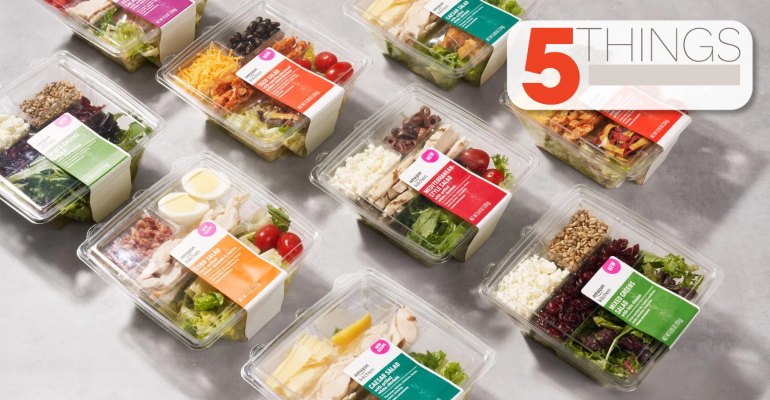How Amazon stays fresh: “We gather data, attend industry trade shows, and visit our stores to immerse ourselves in the customer experience,” writes Melodie Beal, the head of culinary development for Amazon Fresh’s Private Brands. Beal recently talked about the prepared and packaged foods strategies for Amazon Fresh and Amazon Go. The recipe is considered both on paper and in real life, and then to the “cuttings” stage where new products are tasted. If the products are deemed ready for store shelves, the journey doesn’t end there. Multiple teams listen to feedback and changes continue based on what customers like and need. Interestingly, Amazon’s overall grocery strategy has had its struggles but recently made its biggest grocery pivot to date; offering fresh food delivery to non-Prime members, remodeling and reimagining stores, and even testing highly-computerized warehouses. While Amazon continues to recreate its grocery tactics, these top chefs are contributing with a fresh taste of culinary creativity. —Alarice Rajagopal
When the community loses its grocery: Sometimes a supermarket is just a supermarket, and sometimes it’s a crucial community pillar. Chicago’s South Side neighborhood has lost three grocery stores in recent months: two Targets and a Whole Foods. The Whole Foods was replaced by a Save A Lot, which has a reputation in the Black and Brown neighborhood for being dirty, selling spoiled or expired food, and having unfriendly employees. Consumers and local politicians alike are skeptical of the chain’s entry to the neighborhood. Chicago Business took a deep dive into the history of supermarkets in the neighborhood, where independent groceries struggle to survive. —Leigh Anne Zinsmeister
No doggone way: Some Publix shoppers are on a short leash. Publix stores in South Florida said they have had enough of owners allowing their pets to sniff around the grocery store. Signs were posted all over reminding shoppers that pets are not allowed (it’s a federal law), and this includes emotional support animals. Service animals are still welcome. When the postings were not enough, store managers brought out the big guns and are now threatening to get the police involved. Those caught moseying with their pets could face a trespass violation. Boca News Now has been receiving photographic evidence of violators almost daily, and the readers are applauding the move. “It’s about time,” wrote one. “Publix became a zoo, as other supermarkets have as well. The only thing more disgusting than the dogs sniffing fresh food and produce is the people who think it’s perfectly OK.” You read it right, pets, no more grocery sniffing for you. —Bill Wilson
How to retail your retail employees: In a sit-down with Insider, Walgreens’ global chief human resources officer Holly May shared the revelations that led to the company’s expanded partnership with Mental Health America, providing support to kids in the back-to-school season. May said that she was forced to open up to her team about challenges she was facing in her personal life, and soon realized that that behavior led to others doing the same — to everyone’s benefit. She also shared details of Walgreens’ office policies, changes in the industry over the course of the pandemic, and advice for Gen Z entering the workforce. —LAZ
No paper under any circumstances: For some companies, removing paper from the business process is a way of preserving the Earth. For Instacart, not giving out paper receipts is a way of preserving its customer base, and Instacart shoppers are actively discouraged from providing paper receipts to those they shop for. The fear is if a shopper receives a paper breakdown of everything that was purchased, and all the fees that were applied, they would realize how much more expensive it is to do the grocery work by app instead of visiting the store on foot. Electronic receipts are provided, but apparently do not tell the whole story. Instacart says that it’s retailers which are charging the higher prices for items ordered through the service. Either way, the whole thing starts to make shopping in-store a whole lot more attractive.—BW





